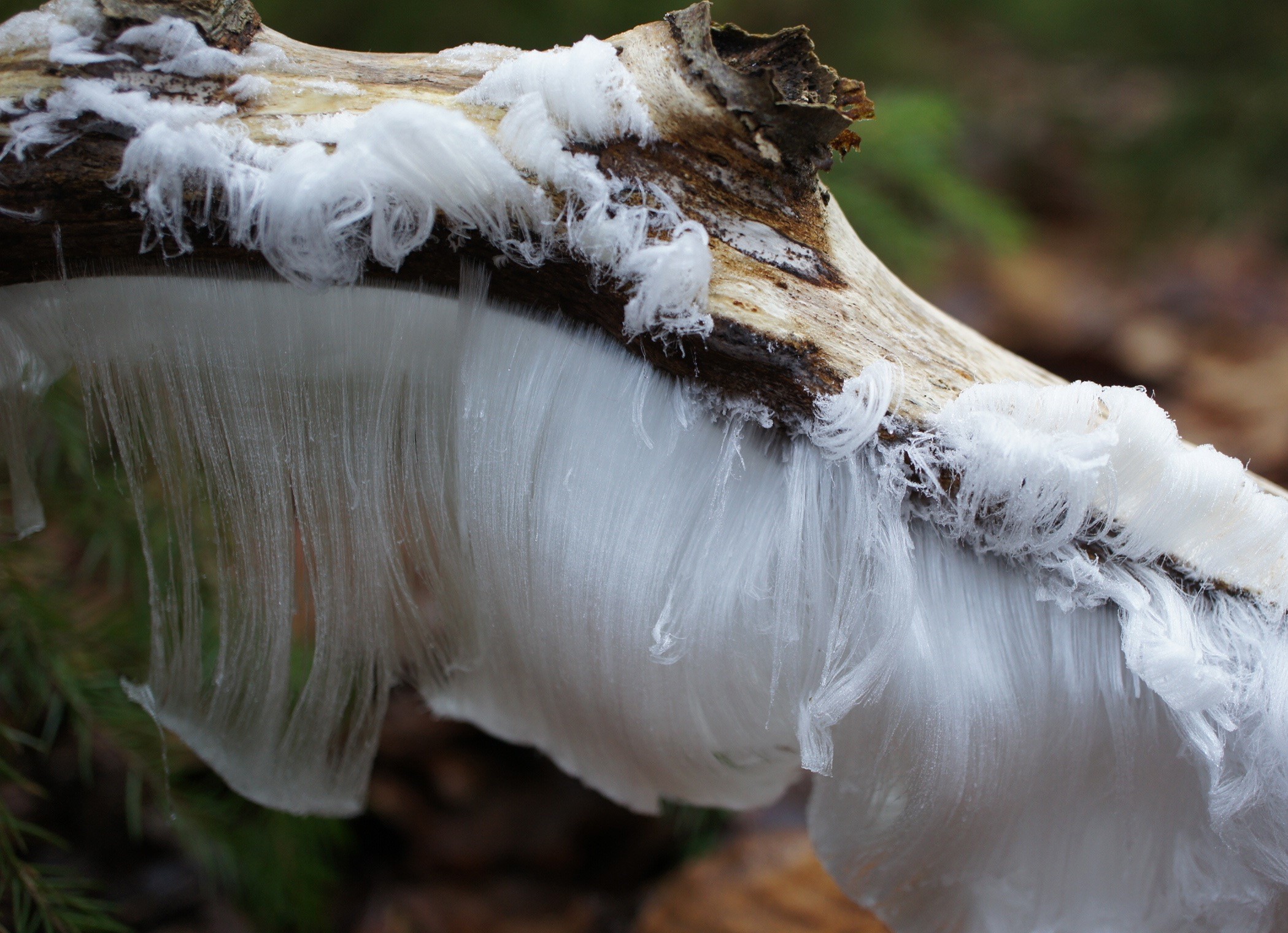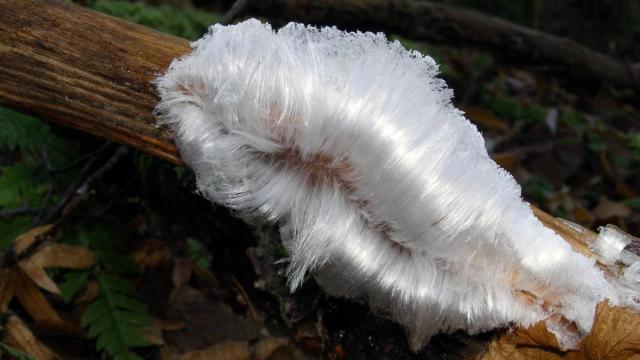Fungi are some of the weirdest and most fascinating creatures on Earth, but they have really outdone themselves with this one: Hair ice. According to new research, the icy hair-sculptures that crop up overnight in forests before melting away in the sun have fungal fingerprints all over them.
Hair ice is this totally weird stuff people have been finding in the woods for years. Tufts of ice crystals will sprout up over rotten logs and leaves, as if somebody scalped a bunch of Ian McKellens and left the evidence strewn everywhere. Hair ice forms in cool, high-latitude forests on humid nights when temperatures are just below freezing, and it usually disappears soon after sunrise.
In 1918, Alfred Wegener (of plate tectonic fame) suggested that fungal mycelia — the thread-like filaments mushrooms use to mine nutrients in the soil — might be involved. But for almost 100 years, nobody bothered to follow up on that hunch.
Now, a team of Swiss and German scientists believe they have found the culprit: The humble forest fungus Exidiopsis effusa.
“When we saw hair ice for the first time on a forest walk, we were surprised by its beauty,” said Christian Mätzler, a physicist at University of Bern in Switzerland and co-author on a new scientific paper describing the phenomenon. “We started investigating this phenomenon, at first using simple tests, such as letting hair ice melt in our hands until it melted completely.”

Hair ice in a forest near Moosseedorf, Switzerland. Picture: Christian Mätzler
Using microscopy, Mätzler’s co-authors — a chemist and a biologist — identified 11 different species of fungi associated with hair ice-ridden wood samples . But E. effus was the only species found everywhere, and in many cases, it was the only fungus present at all. Further chemical analysis of hair ice revealed lignin and tannin, two byproducts of fungal metabolism.
Meanwhile, Mätzler worked out the physics of hair ice formation. First, water near a branch surface freezes when it comes in contact with cold air, sandwiching a thin film of liquid water between ice and wood pores. Next, suction forces slowly push the liquid water inside the wood-ice sandwich outward, causing it to freeze in thin filaments as it moves. Mätzler thinks that E. effus — whose own mycelium are usually found close by — directly aids the ice crystals in holding their shape.

Picture: Christian Mätzler.
“The same amount of ice is produced on wood with or without fungal activity, but without this activity the ice forms a crust-like structure,” Mätzler said. “The action of the fungus is to enable the ice to form thin hairs — with a diameter of about 0.01mm — and to keep this shape over many hours at temperatures close to 0C. Our hypothesis includes that the hairs are stabilised by a recrystallisation inhibitor that is provided by the fungus.”
Why a fungus would want do such a thing, or whether this is the natural byproduct of some other biological process, remains to be seen. Yet again, Kingdom Fungi shows us just how alien life on Earth can be, and how much we have left to learn about it.
[EGU News]
Picture: Hair ice is growing on a branch in a forest near Brachbach, Germany, via Gisela Preuß
